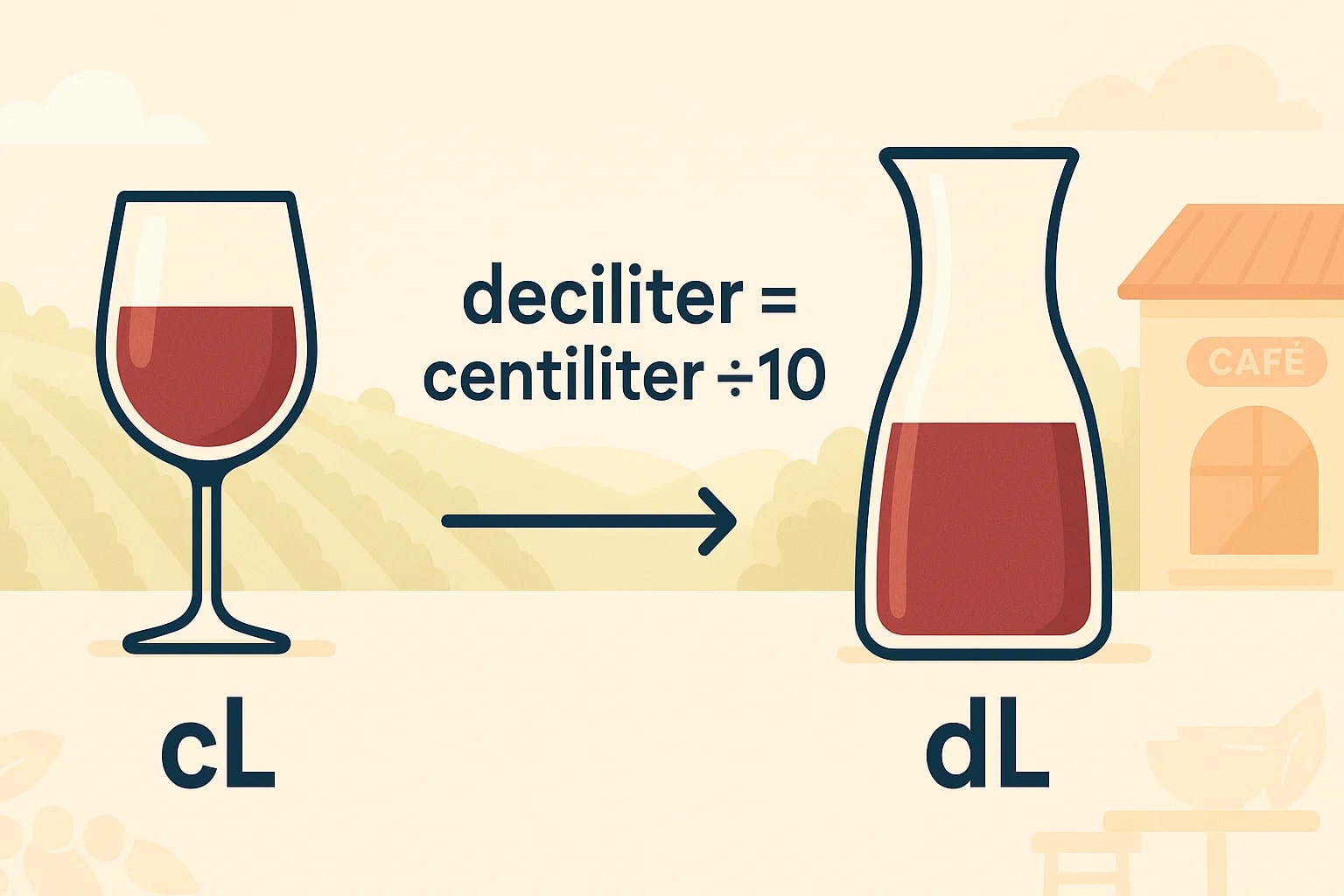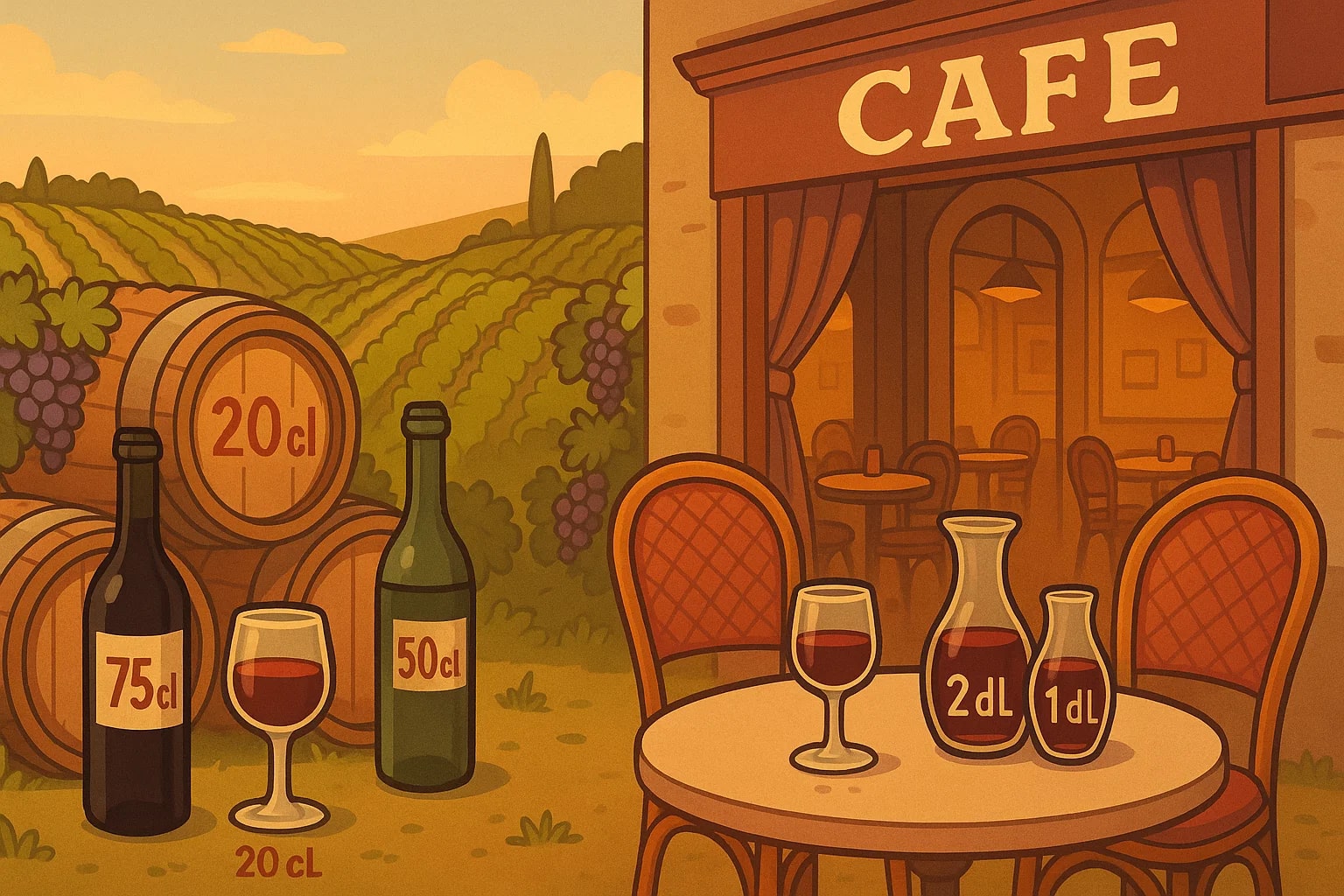centiliter to deciliter – How to convert cL to dL
Converting centiliter to deciliter may sound like a small detail in the world of measurement, but it has shaped everything from recipes to wine menus across Europe. This guide will show you the cL to dL conversion formula, share some interesting facts about the units, and take you on a story where wine, trade, and tradition bring these conversions to life.
What is a centiliter (cL)?
The centiliter (cL) is a metric unit of volume, equal to 1⁄100 liter. It is widely used in Europe for beverages and in culinary contexts. For example, a soft drink bottle might be labeled 33 cL, which equals 0.33 L.
What is a deciliter (dL)?
The deciliter (dL) is also a metric unit of volume, equal to 1⁄10 liter. It is commonly found in older recipes and still used in Scandinavian countries for everyday measurements. For example, 2 dL of milk equals 0.2 L.
Conversion formula – centiliter to deciliter
The formula is straightforward since both are metric units:
1 dL = 10 cL1 deciliter = centiliter ÷ 101 centiliter = deciliter × 10
Examples:
-
25 cL = 2.5 dL -
4 dL = 40 cL

For faster and broader conversions beyond centiliter and deciliter, try the Volume Converter or check out more Conversion Tools available on Jetcalculator.
Do you know?
-
Centiliter in European bars: In France and Switzerland, wine and spirits are often served in 10 cL glasses, equal to 1 dL. This tradition makes the cL-to-dL conversion part of everyday dining.
-
Deciliter in Nordic recipes: Scandinavian cookbooks often list ingredients in dL. For example, “3 dL flour” is common in Swedish or Finnish baking, making the unit very practical at home.
-
Pop culture reference: In the French film Amélie, a café scene shows drinks ordered in cL, reflecting real Parisian menus where beverages come in 25 cL or 50 cL servings.
From Vineyards to Café Tables – How Wine Kept cL and dL Alive
Long before the liter became the global standard, Europe measured everyday drinks in centiliters and deciliters. In French cafés of the 19th and 20th centuries, it was common to see locals order “un décilitre de vin” — a single glass of wine measured at exactly 1 dL, or 10 cL.
This tradition didn’t fade away. Even today, walk into a Parisian bistro and the menu often lists house wine as 25 cL, 50 cL, or 1 L. The smaller increments make sense: wine is best enjoyed in modest servings, and the cL–dL relationship is the perfect scale for it.
In Italy, taverns used carafes marked in dL to serve local wines. Ordering “mezzo litro” (half a liter) might bring you 5 dL, while a lighter order could be just 2 dL. Travelers quickly learned to convert between cL and dL when sharing a table with locals.
For merchants in trade hubs like Bordeaux or Florence, these measures weren’t just for dining but also for commerce. Standardized conversions — 10 cL = 1 dL — made it possible to price and sell wine consistently across markets. What began as simple café orders became part of Europe’s commercial backbone.
This cultural persistence explains why both centiliters and deciliters survive in everyday European life. Unlike other metric subunits that faded from daily use, these two stayed relevant thanks to the traditions of vineyards, cafés, and dinner tables.

Bringing it all together
Whether you are working with a recipe, converting for a classroom exercise, or just reading a European wine list, knowing how to convert centiliter to deciliter is surprisingly useful. With the simple formula 1 dL = 10 cL, you can switch between the two without hesitation.
Next time you see 25 cL of wine on a menu, you’ll know it’s exactly 2.5 dL — a tradition that connects mathematics, culture, and taste in one elegant glass.

